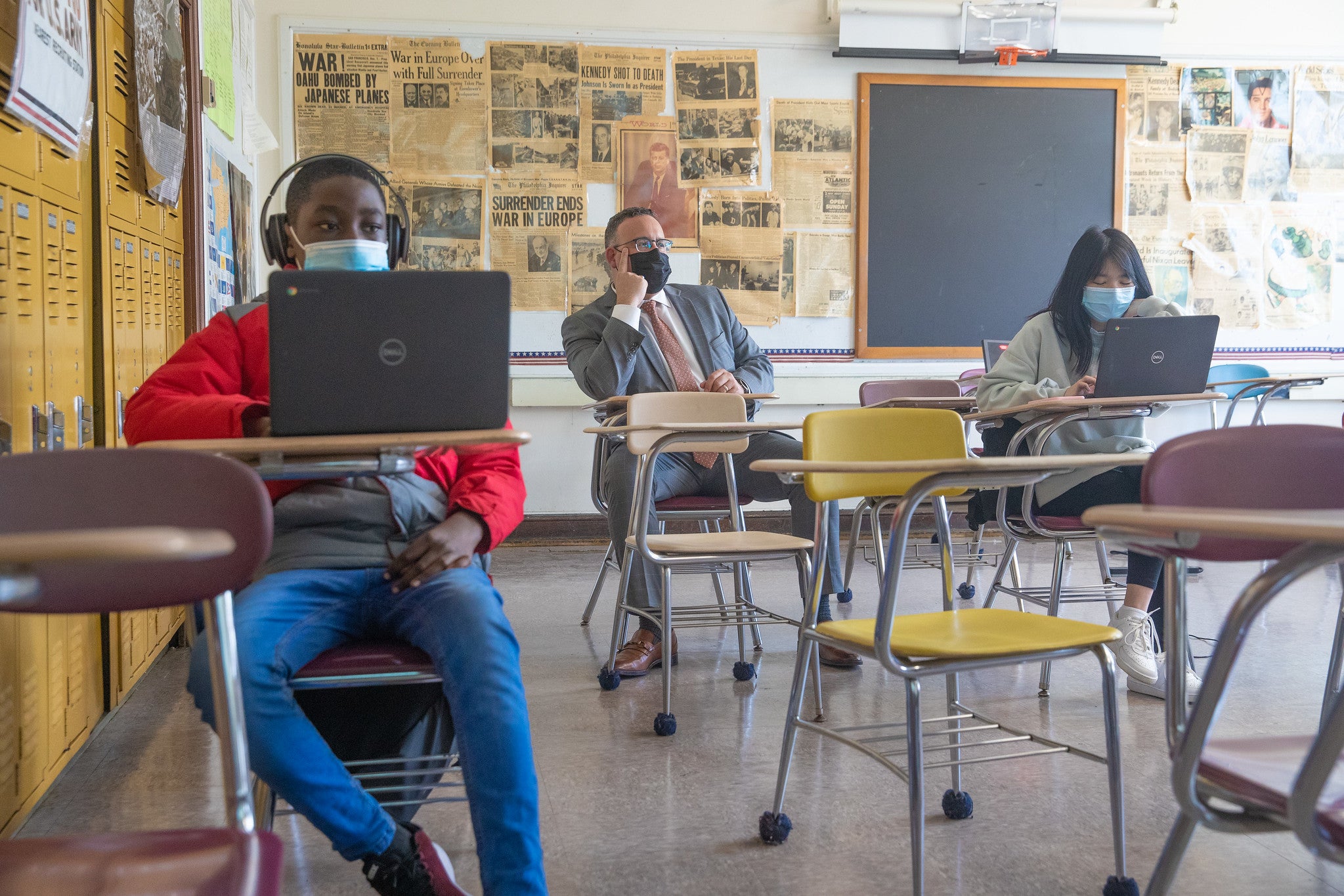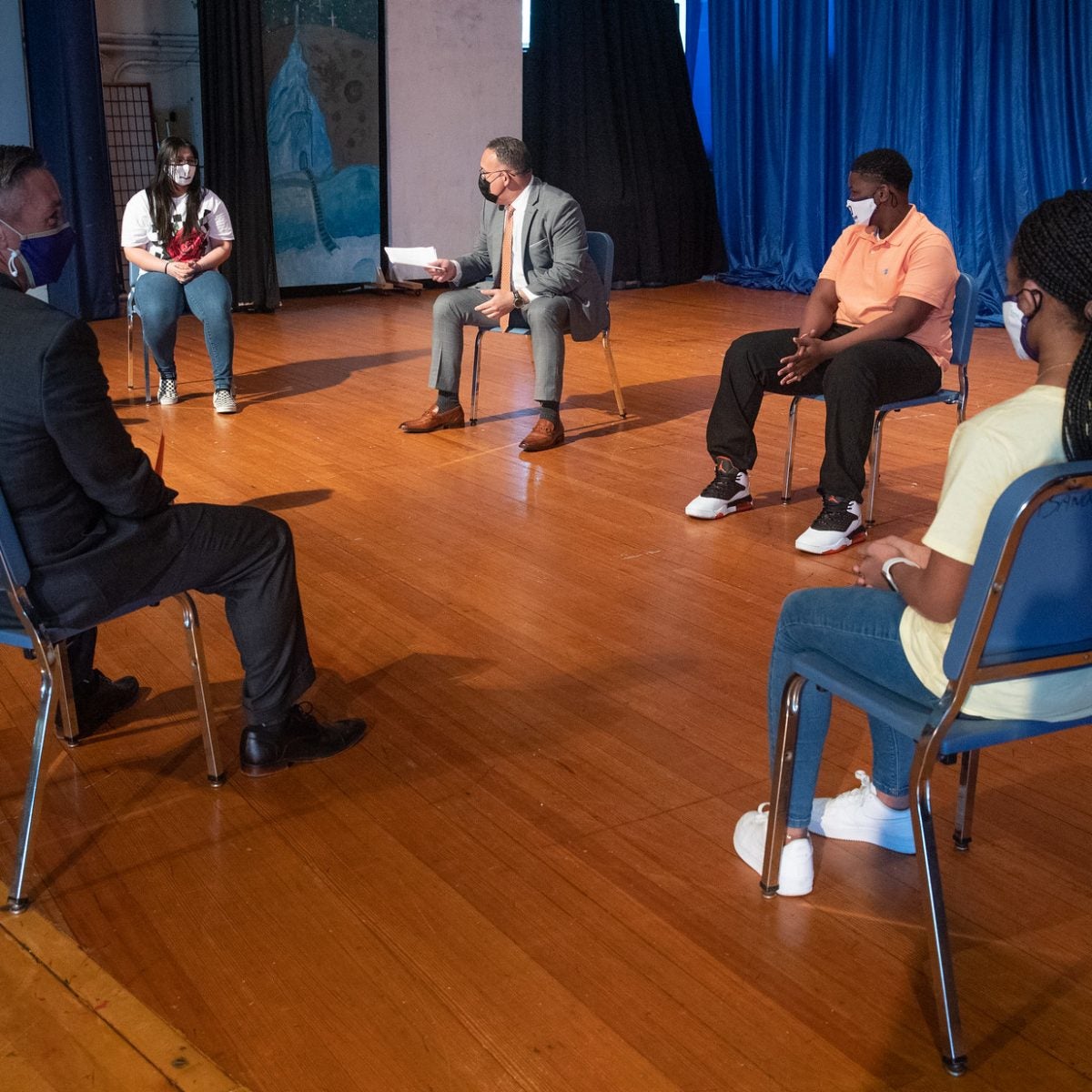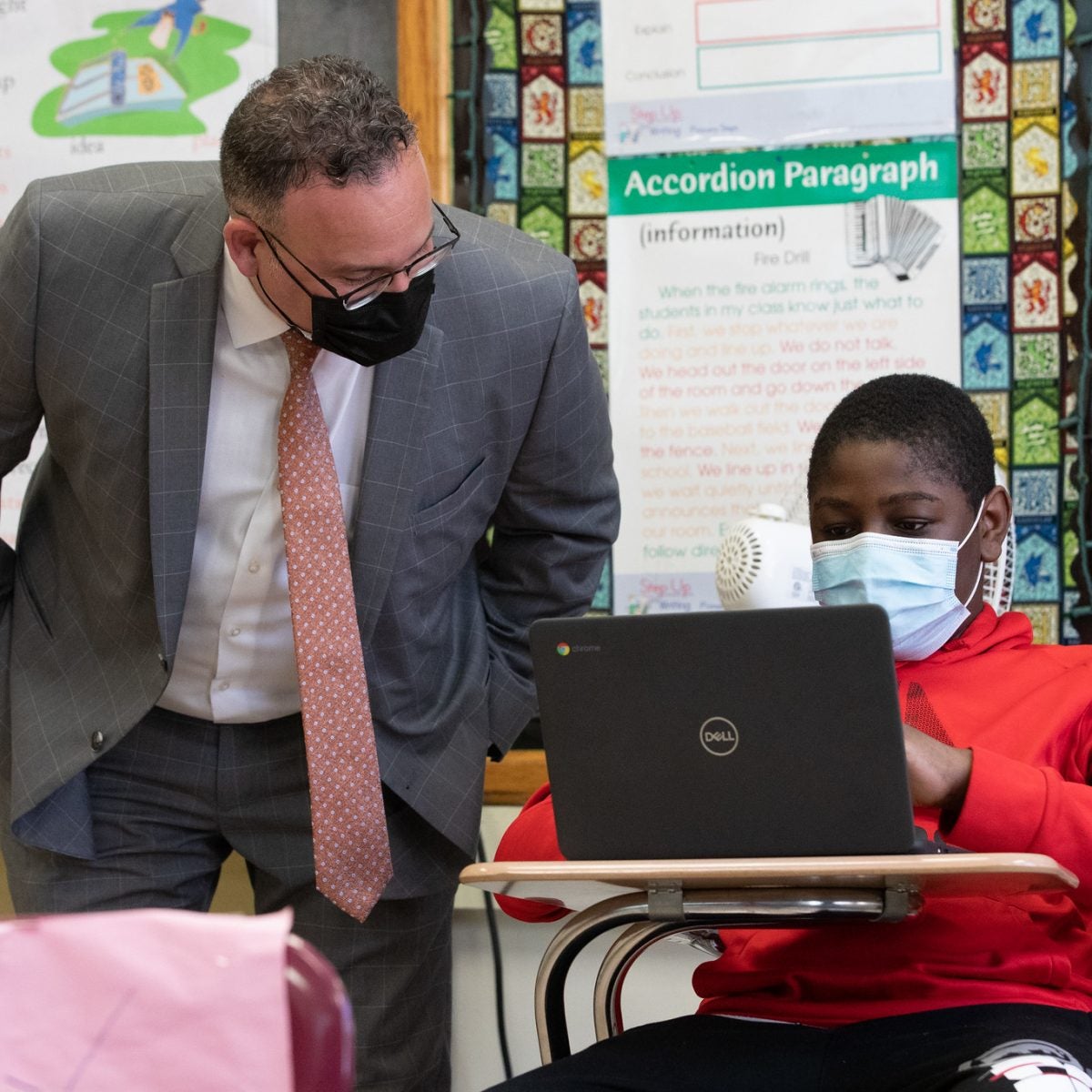U.S. Secretary of Education Miguel Cardona on COVID-19 and the Path Forward for Students
Dr. Miguel A. Cardona was sworn in as the 12th U.S. secretary of education in March. The son of Puerto Rican immigrants grew up in public housing, and education provided his ticket to success. He began his career as an elementary school teacher and award-winning principal, and until recently served as commissioner of education for Connecticut’s public schools.
President Joe Biden called the new education secretary a “lifelong champion of public education.” In an exclusive interview with ESSENCE, Cardona discusses the impact of COVID-19, resources for students, and the path forward for kids, parents and educators, alike.
The COVID-19 pandemic has shifted everything for students, parents and teachers. What’s the message the Department of Education wants to stress moving forward?
MIGUEL CARDONA: This pandemic has taken an extraordinary toll on students, parents, educators, and schools. With proper mitigation strategies, there is no reason that K-8 schools can’t open and offer in-person instruction to all students. The funds from the American Rescue Plan and the extraordinary steps we at the Department are taking to get these resources to states quickly will allow schools to open their doors and meet the needs of our students. And particularly those disproportionately impacted by the pandemic and where the pandemic has exacerbated existing inequities. This is an opportunity for us to not only get schools reopened, but to reimagine education and not go back to the way things were in March 2020. It is my priority that we use reopening as a tool to fight inequities and build back better than before.
How are you ensuring parents it’s safe for students to return to school?
CARDONA: As the dad of a son and daughter in public school, I understand the tough choices families are making. I also recognize the concerns some parents of color have felt about their children returning to school. It’s very important for families to feel confident that schools are being reopened in ways that reflect the science and according to practices that will keep everyone safe. That’s why our role is not only to provide resources to states and schools to invest in mitigation strategies to reopen their doors, but to provide guidance, support, and transparency to communities, parents, and students so we can all work together to get students back into classrooms. There really is no substitute for in-person learning, and schools need to continue the momentum we’re gaining in that direction, for all schools and all students.
The coronavirus pandemic confirmed racial disparities, including in classrooms. How do we ensure Black and Latino children emerge with equity in terms of learning opportunities?
CARDONA: COVID-19 has been devastating for students and families, and so many of our Black and Latino students have encountered even more challenges. Despite heroic work by educators, staff, and families, the pandemic has led to increased absences, interruptions in learning, food insecurity, and more social isolation. The pandemic has exacerbated existing inequities for all students, but particularly for those already facing challenges, including students from low-income backgrounds; underserved communities of Black and Latino students, as well as Asian and Native American students; English language learners; students with disabilities; students experiencing homelessness; and migratory students. That’s why the Biden-Harris Administration has launched an aggressive strategy to help schools reopen safely and equitably, maximize in-person instruction time, and address the academic, social, and emotional needs of students, including by expanding opportunities for underserved students.
What role will school nurses play amid COVID-19? Will there be social workers and counselors in schools to help returning students?
CARDONA: Let’s be clear: whether you are a teacher, a nurse, a bus driver, a counselor, a cafeteria worker, or a custodian, the past year has called for courage, sacrifice and tough decisions, and I honor all those efforts. Our staffers with expertise in all areas of health are committed to our students and their families, and their efforts during these critical times have been extraordinary. And we know that for nurses and social workers, their work meeting the physical, social, emotional, and mental health needs of our students will be critical in the months and years ahead. That’s where the American Rescue Plan can help. Funding from the plan can go toward strategies to keep students and staff safe. If schools need to employ more nurses and social workers, this funding can help. We need to make sure that as more schools open their doors, they can provide the resources and support our students and staff need after the last year—not just because of the pandemic but as our nation confronts the legacy of systemic racism and addresses the mental health needs of students and children across the country.
The pandemic has shone a spotlight on the digital divide and insufficient Internet access for communities nationwide. Is this an issue the Department of Education is already tackling or will address?
CARDONA: This pandemic has highlighted the digital divide facing many of our communities. Although every district had to scramble for solutions, there were some districts that had all their students up and running on virtual learning in days. For others, it took months, and that was a serious problem. Funding from the American Rescue Plan can be used to help resolve these issues. Schools can fund the purchase of computer equipment, provide Wi-Fi hotspots for students without connectivity for remote learning, and support educators in the effective use of technology. We are also working with the FCC and exploring all options to provide more technological resources for students not only for the duration of this pandemic, but to permanently give students in underserved communities a better system than the one they entered.
When I was commissioner of education in Connecticut, we saw that roughly one-out-of-every-four students in the state didn’t have access to a computer when we went to remote learning. We worked quickly to close the digital divide and ensure every public school student in Connecticut had a laptop and access to high-speed internet so they can log in to school remotely during the pandemic. We were not only dealing with a health pandemic, but also an educational crisis. I know that providing the right device and good connectivity in quality content will address the educational gap and provide students who didn’t have it before the opportunity to have access to high quality education.
In certain public school districts such as Baltimore, children were served breakfast and other meals amid COVID-19 at locations off campus. Can you talk about the safety net and wrap-around services that schools can help provide?
CARDONA: Supervision and food resources for our students have always been critical, both before and during the pandemic. Schools have stepped up in unbelievable ways to ensure their students and their communities have these resources. While managing their schoolwork and protecting themselves from this virus, many students also have had to deal with food insecurity. We’ve seen how community schools and after school services have become even more essential during this pandemic, and we’ve supported these services by providing food, personal protective equipment, and funding.
We also see an opportunity to make up for lost instructional and extracurricular time through summer programs and have launched a Summer Learning and Enrichment Collaborative with the National Governors Association and the Chief State School Officers. This programming won’t, however, be traditional “drill and skill.” We want to create opportunities for students to reengage in their communities, spend time with their friends, and gain hands-on learning and enrichment experiences that we’ve all missed over the last year. With the American Rescue Plan funds, schools can develop crucial summer and afterschool programming, as well as extended learning and enrichment programs. These will help address the physical, social, emotional, mental health, and academic needs of students impacted most by the pandemic.
More than 70 civil rights and education equity organizations, recently sent a letter to the House and Senate Labor-HHS Appropriations Subcommittees calling on Congress to double the funding for the U.S. Department of Education’s Office for Civil Rights (OCR) to $260 million. The groups say more funding is needed to prevent and respond to discrimination. Can you respond to this?
CARDONA: The Department’s enforcement of education civil-rights laws is critically important to ensuring that all students have access to education free from discrimination, and increased resources will be invaluable for strengthening this work. Especially as the nation grapples with the COVID-19 pandemic, structural racism and other deep challenges that affect students’ educational experience, our Office for Civil Rights leads our efforts in educating schools and others about how to fulfill our nation’s education civil rights protections. OCR enforces laws that prohibit discrimination based on race, color, national origin, sex, disability, and age, and investigates thousands of discrimination complaints each year from students, families, and others. The Office also leads the Department’s work on ensuring that students have meaningful protection against sexual violence in their educational environments under Title IX and has just announced a comprehensive review of our regulations in this area. It is a top priority of mine and of the Biden-Harris Administration to make sure we are providing safe learning environments for every student.
Source: Read Full Article


